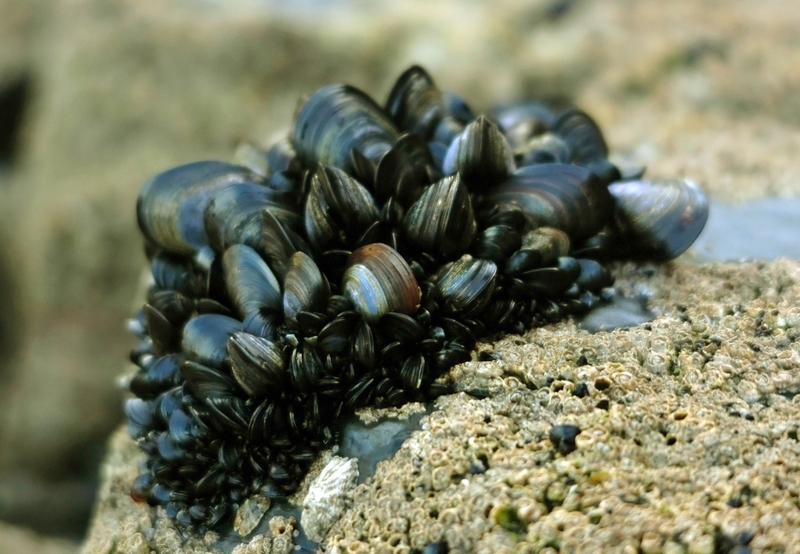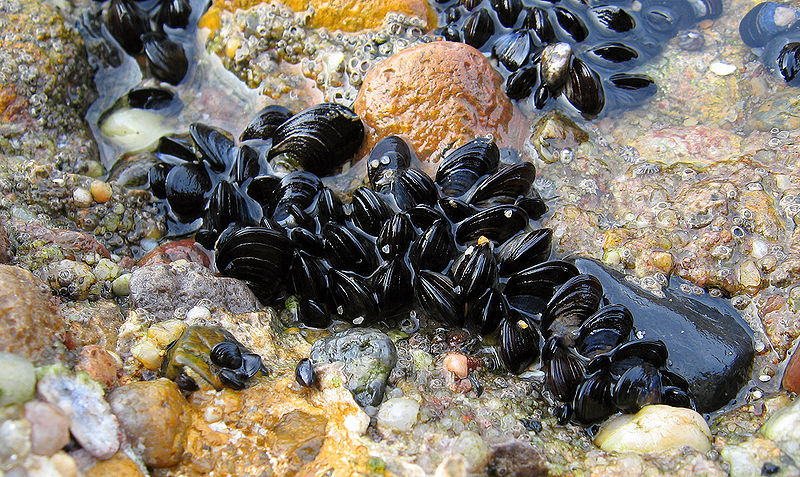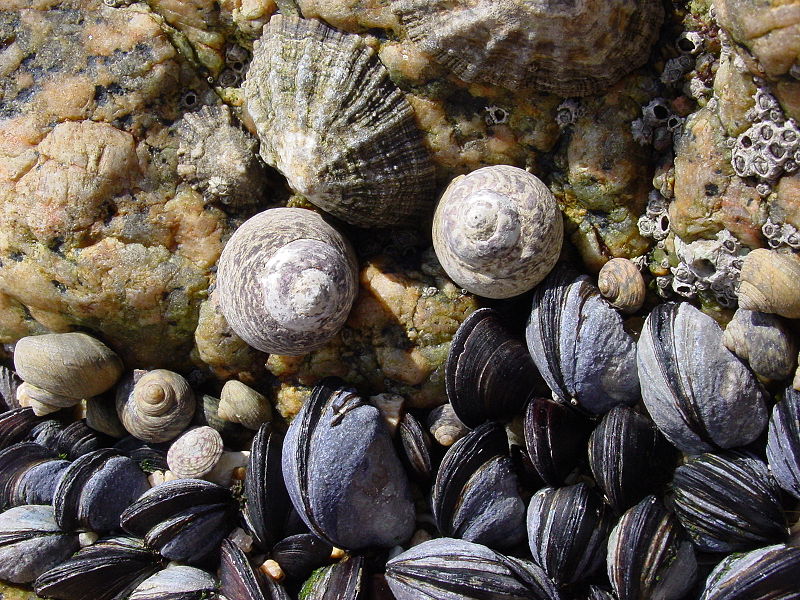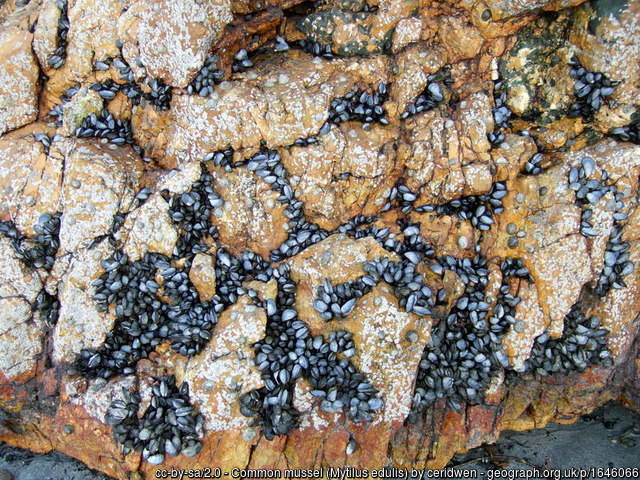❀ Common names: Blue mussel, common mussel, edible blue mussel
❀ Aphia ID#: 140480

Introduction to Mytilus edulis
What is Mytilus edulis?
A species of bivalve mollusk, M. edulis can be found on the intertidal rocky coasts of North Carolina extending north to Southern Canada. They remain permanently attached to the rocky shore intertidal and subtidal habitats through the use of byssal threads (Zagata et al. 2008). M. edulis is considered a non-selective filter feeder and will consume whatever is available in the water column (Zagata et al. 2008). Dense populations of mussels are known as mussel beds (FAO 2006). Mussels found in small groups (6-9) tend to have better reproductive success than mussels found in large groups (21-28) (Okamura 1986). Mussels are common because they have a wide environmental tolerance, they’re are able to survive in high salinity ocean water, brackish water, and near-freezing conditions (FAO 2006).
How to identify it/ species description
The shell of M. edulis consists of two halves (hence, bivalve). The shell is smooth and can be purple, blue, brown or a variation of colors in between (Zagata et al. 2008). They have a very small anterior adductor scar and a large posterior adductor scar where adductor muscles attach that can be used to identify the species as Mytilus edulis (FAO 2006). During their breeding season, males can be easily identified by their creamy white gonads and rounded regularly distributed follicles, while females can be identified by their pink to orange gonads and smoother follicles of varying sizes (Seed 1968). Common parasites found on M. edulis include: Pseudomyicola spinosus, Pinnotheres pisum, and Steinhausia mytilovum (Zagata et al. 2008). Typically blue mussels are found in aggregations or dense clusters (Okamura 1986). These aggregations protect individuals from predation and other stresses, therefore increasing their survival rate (Christensen 2015).
Role in the ecosystem
Mytilus edulis is a filter feeder and can remove material from the water column. Mussel beds created by M. edulis act as habitat as well as a food source for many marine species, they also allow for algal attachment attracting more species to the area. M. edulis larvae are an important source of prey for planktivorous species (Zagata et al. 2008). Mussel beds create secondary habitat for fauna to live, hide, and feed within. Microhabitats created by mussel beds provide a refuge for marine species seeking shelter from predation. Marine species found within mussel beds have a higher biodiversity than that found in nearby ecosystems. Mussels deposit large amounts of waste and fine particulate matter creating a change in their physical environment by making a new sediment habitat and smothering smaller fauna close-by (Ragnarsson et al. 1999).
Distribution Map
More Images
1st image: Andreas Trepte [CC BY-SA 2.5 (https://creativecommons.org/licenses/by-sa/2.5)] 2nd image: Luis Miguel Bugallo Sánchez (Lmbuga Commons)(Lmbuga Galipedia) [CC BY-SA 3.0 (http://creativecommons.org/licenses/by-sa/3.0/)]



